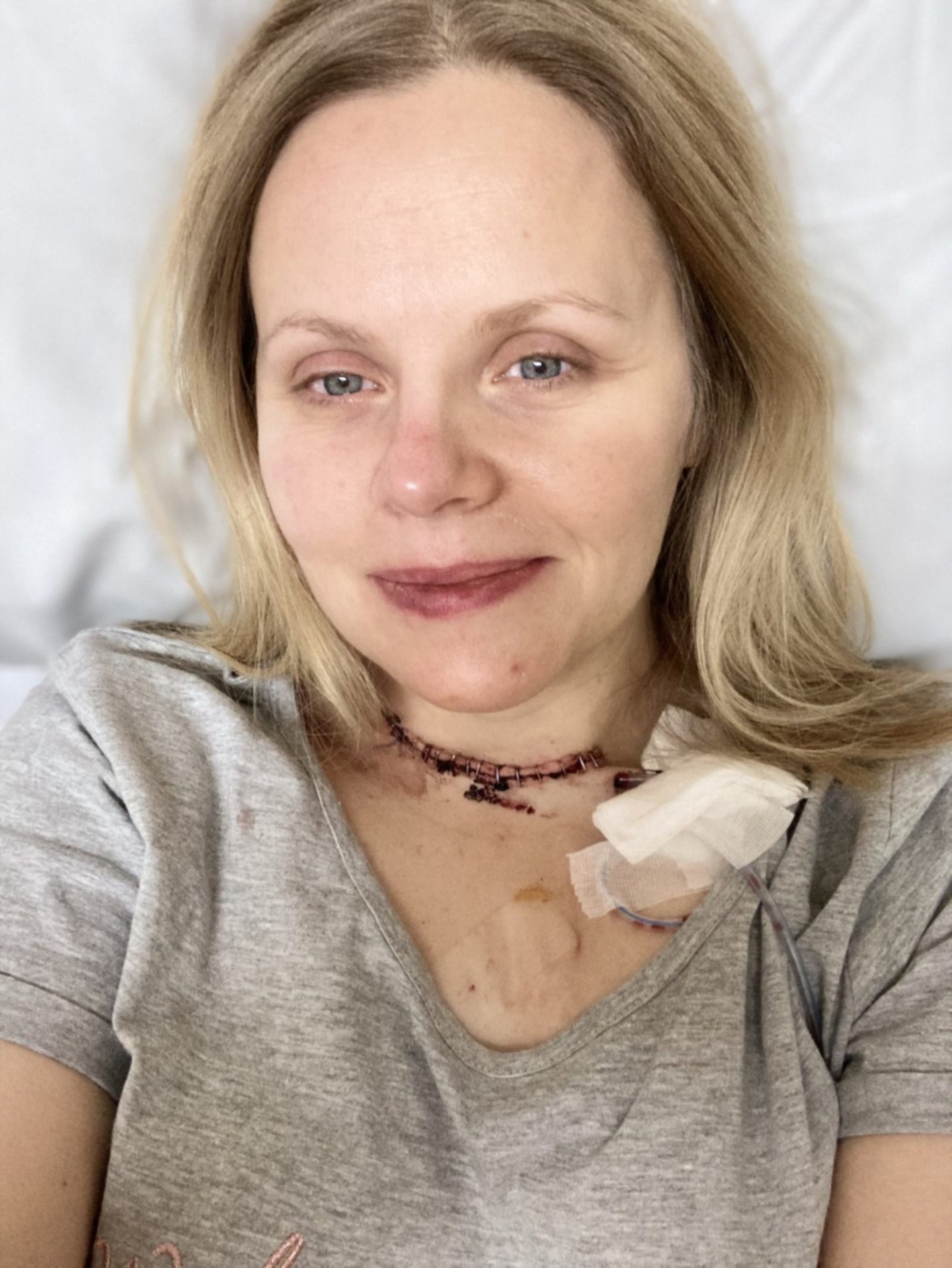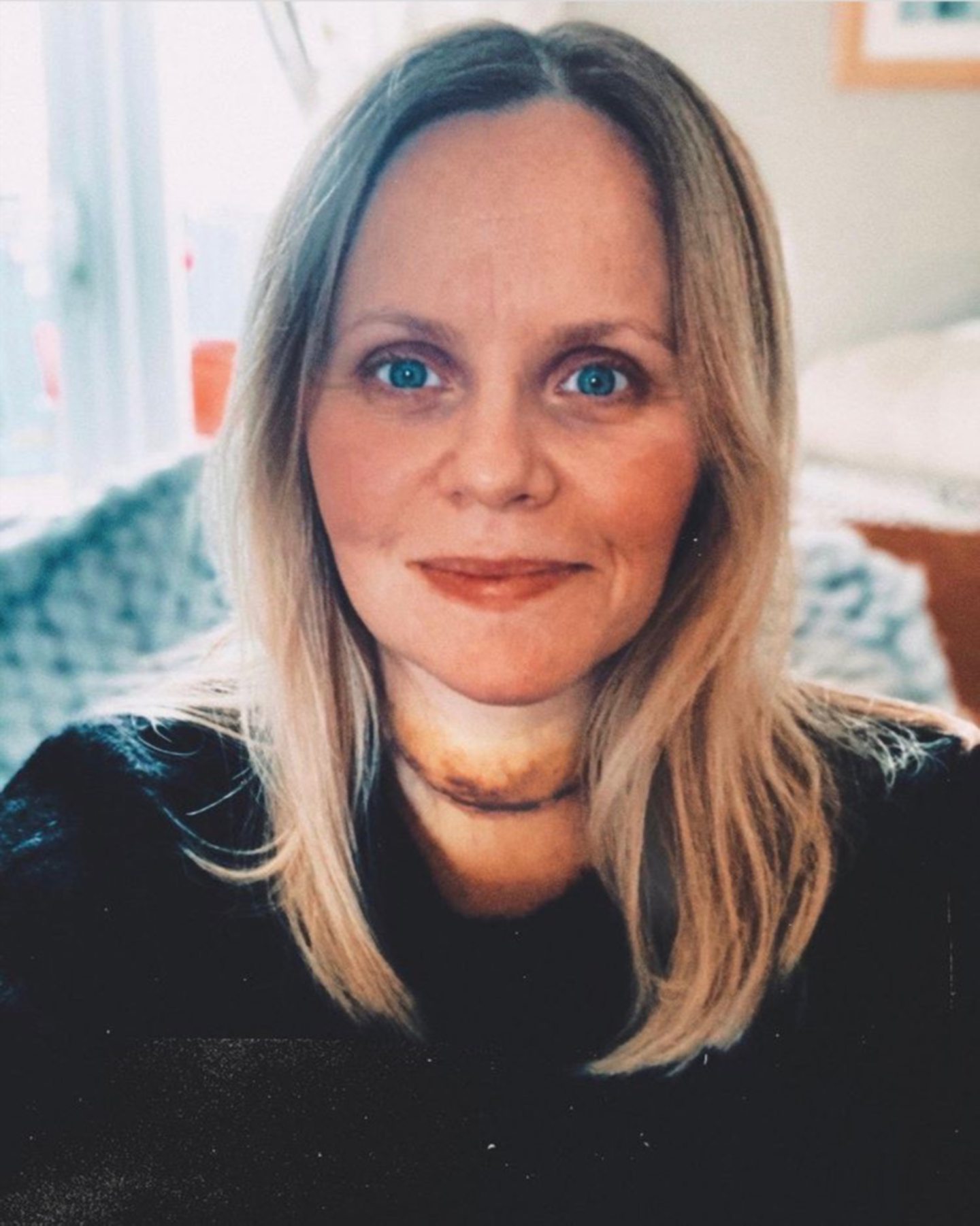
“If you’re going to get cancer, it’s a pretty good one.”
It was a Wednesday evening in November, mid-pandemic, when my mobile phone rang resulting in those unforgettable words.
Thyroid cancer. Possibly. An operation would tell us for sure.
It’s a cancer that more and more people seem to be getting, I’ve since learned, and one that I was about to become all too familiar with.
It started for me with a sore throat as I watched TV in late June last year. It hurt to swallow and, as I instinctively rubbed my neck in response, I was jolted by the shock of finding a sizeable lump.
“I would have noticed a lump,” I reassured myself. “It can’t be anything serious. A gland, maybe.”
The next day, neck lump all but forgotten, I was winding down in the evening scrolling through social media.
I don’t know why because I’ve never seen it since, but I found myself looking at the Instagram grid of a clinic in India.
The title was simply: “Signs of thyroid cancer” and top of the list was a neck lump.
In the depths of me I knew I had to pay attention.
When eventually I got an appointment to see my GP face-to-face he offered nothing but reassurance. However, exposure to a lot of dental X-rays in my youth tipped me into the “better safe than sorry” category.
A scan would tell us more but Covid meant I was triaged to a non-urgent room with a non-modern scanner and, as a consequence, a non-specific result.
First one: “ All looks good, but let’s do it again.”
Second scan result: “Findings don’t match the picture – let’s do another.”
Third report: “Ah… actually… this is concerning. Something’s not right in your lymph nodes as well.”
The day of my summer holiday – kids crammed into the back of the car – we stopped at the hospital en route to the Hebrides for what would be the first of many biopsies.
Finally, at 8pm that November night, the call came. “We think this could be cancer.”
My world hadn’t stopped spinning when I was dropped off, a week later, outside the hospital to don a mask and walk to the surgical ward.
The original plan was to go “in” and see what was going on, do a very specific biopsy and, if necessary, remove half of my thyroid.
When I woke up my doctor was sitting on my bed to tell me that I’d had a radical neck dissection.
It was a much longer surgery than planned. My lymph nodes were gone, a neck drain was in, and the right side of my thyroid was no more. He found significant blackened lymph nodes and necrotic tissue.
So complicated was the procedure that I was left with Horner syndrome – an unresponsive, droopy eye due to a patch of nerves being damaged in the long, intricate process of removing a deep-set lymph node.
Within days it was confirmed I did, indeed, have stage one papillary thyroid cancer, with a 10% more aggressive element, that had spread to my lymph nodes. Seven more days and I was alone again walking back to the ward to have a second operation to rid my neck of the rest of my thyroid and any more diseased lymph nodes.
This time it was simple. Twenty hours later and I was shuffling on my own down a corridor, carrying a bag of pills with a rucksack, trying not to strain my newly reopened neck.
Surrounded by signs that said things like “oncology” and “nuclear medicine” I was entirely on my own, laminated Covid-19 posters reminding me why. I have to say, at that point, it didn’t feel like a good cancer.
In truth, no part of it has felt good.
In January my two ops were followed by a weekend in a lead-lined room where I was given a radioactive iodine pill to nuke what cancer cells remained, and now I’m forever reliant on a synthetic thyroid hormone called thyroxine.
I’ve gained a lot of weight since losing my thyroid and I’m still having physio on my neck.
I’m lucky. I believe that. I didn’t lose my hair. I haven’t had a prognosis like many others. My cancer is treatable – but I did have to have the cancer talk with my kids nonetheless.
I’ve had to watch my body changing and have had to readjust to seeing my face with a drooping eye, which gets worse when I’m tired.
Will I be OK? Yes, I think I will.
But was it good? No. No, it wasn’t.
Cancer is still cancer. And so I implore everyone: check your neck.
Lindsay Bruce, 42, is a writer based in Aberdeen
The facts
Thyroid cancer is rare, but numbers are rising:
- There are around 2,700 new cases in the UK each year
- It affects more women than men (at a ratio of 2 to 1)
- It is the most common endocrine cancer
- It’s most common in people in their 30s and those over the age of 60
- Like most cancers, there are different types of thyroid cancer
- The most common are known as “differentiated”, and these include papillary and follicular cancers
- These types are usually treated with surgery to remove all or part of the thyroid and any mass, and radioactive iodine treatment (RAI)
- Other, less common types of thyroid cancers are Medullary, Anaplastic and Lymphoma.
- These may need other medicines and cancer treatments
Prognosis for people with differentiated thyroid cancer is excellent: it has a 90% cure rate.
The less common variants can be more aggressive but there is no one-size-fit-all approach with thyroid cancer and treatment.
The symptoms
The main symptom of thyroid cancer is a painless lump, low down in the front of the neck.
However, only around 1 in every 20 neck lumps are cancerous.
It’s more likely to be cancer if it feels firm, does not move around easily under your skin and gets bigger over time.
Other symptoms of thyroid cancer include:
- Swollen neck glands
- Unexplained hoarseness that does not get better after a few weeks
- A sore throat that isn’t getting better
- Pain in your neck
- Difficulty or pain when swallowing
- Difficulty breathing
While it’s unlikely a neck lump will result in a cancer diagnosis, it’s always better to get checked out.
See your GP or visit the Butterfly Thyroid Cancer Trust or macmillan.org.uk/cancer-information-and-support/thyroid-cancer for more information.

Enjoy the convenience of having The Sunday Post delivered as a digital ePaper straight to your smartphone, tablet or computer.
Subscribe for only £5.49 a month and enjoy all the benefits of the printed paper as a digital replica.
Subscribe © SYSTEM
© SYSTEM © SYSTEM
© SYSTEM